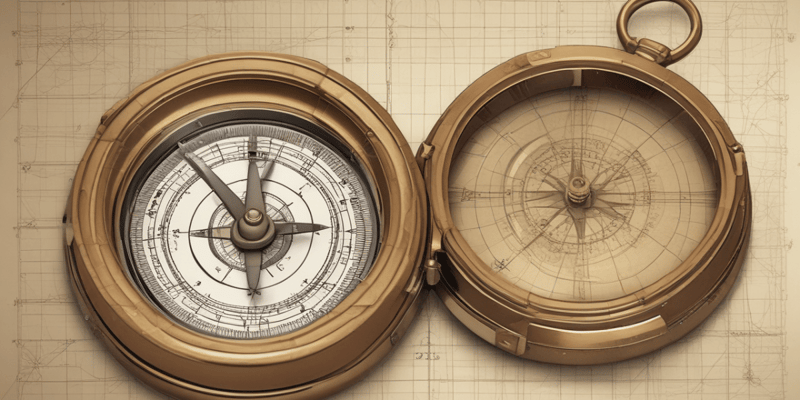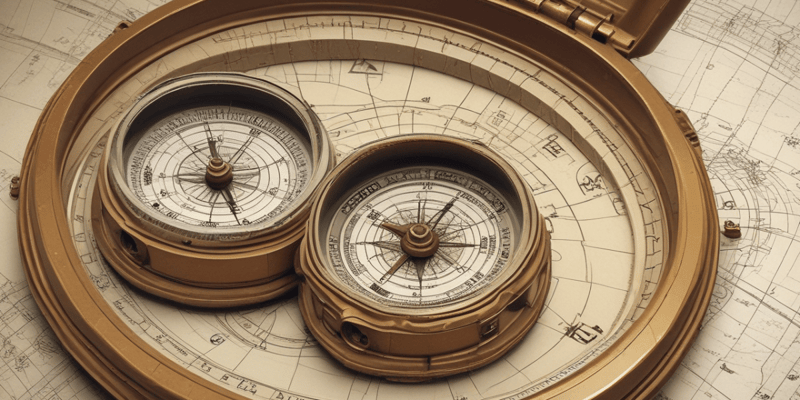Podcast Beta
Questions and Answers
What are the two major groups into which bearing can be divided?
Which two categories further subdivide rolling bearings?
What is a characteristic of a good bearing?
What is the primary function of a plain bearing?
Signup and view all the answers
Why are some plain bearings flanged?
Signup and view all the answers
What term is commonly used for anti-friction bearings?
Signup and view all the answers
Which advantage do rolling element bearings have over plain bearings?
Signup and view all the answers
What is a bushing typically used to support?
Signup and view all the answers
What type of bearing can handle high thrust loads combined with moderate radial loads?
Signup and view all the answers
Which type of bearing is specifically designed to support heavy radial loads with a length greater than its diameter?
Signup and view all the answers
What type of loads are tapered roller bearings capable of supporting?
Signup and view all the answers
What defines an interference fit?
Signup and view all the answers
When is a retaining plate particularly useful?
Signup and view all the answers
What is a significant advantage of bearing retaining plates?
Signup and view all the answers
What is a disadvantage of bearing retaining plates?
Signup and view all the answers
What does impression staking involve?
Signup and view all the answers
Which of the following is NOT a disadvantage of impression staking?
Signup and view all the answers
What application are thrust bearings often used for?
Signup and view all the answers
Study Notes
Bearing Classification
- Bearing types are broadly divided into plain bearings and rolling bearings.
- Rolling bearings are further categorized into ball bearings and roller bearings.
Characteristics of Good Bearings
- Must be strong enough to withstand imposed pressures.
- Should minimize wear and friction during movement.
- Designed with close tolerances for quiet, efficient operation.
Plain Bearings
- Composed of a cylindrical component made from softer material than the shaft journal.
- Typically designed to support radial, or journal, loads.
- May feature flanged designs to accommodate thrust and radial load combinations.
Bushings
- Small, removable plain bearings often referred to as bushes or bushings.
- Used to support smaller shafts in engine accessories, control shafts, rods, or trunnions.
Anti-friction Bearings
- Commonly known as rolling element bearings, including roller and ball bearings.
Advantages of Rolling Element Bearings
- Exhibit low starting friction.
- Capable of carrying heavy loads efficiently.
- Suitable for applications involving reversing or oscillating movements.
- Operate at cooler temperatures compared to plain bearings.
- Generate significantly less friction than plain bearings.
Ball Bearings
- Ideal for high-speed applications that require low loads.
Angular Contact Ball Bearings
- Capable of handling high thrust loads alongside moderate radial loads.
Cylindrical Roller Bearings
- Have the highest load capacity and manage high radial and shock loads more effectively than ball bearings.
Needle Roller Bearings
- Characterized by rolling elements with a length greater than their diameter.
- Support heavy radial loads efficiently.
Applications of Roller Bearings
- Found in gearboxes, crankshaft main and con-rod bearings, and heavy accessories.
- Suitable for scenarios requiring both heavy load capacity and a smaller diameter compared to ball bearings.
Tapered Roller Bearings
- Known for their robustness and ability to support heavy radial and thrust combination loads.
Thrust Bearings
- Commonly used in vertical mounts to support heavy machinery, such as radial-arm drill presses.
- Employed in variable pitch propellers to allow for blade swiveling under centrifugal force.
Interference Fit
- Defined as a fit where the part being inserted is larger than the bore itself.
Retaining Plates
- Used when a high-strength axial location is necessary.
- Advantages include high axial retention capacity and eliminating damage to housing during bearing replacement.
- Easy to install and replace bearings without affecting internal clearance.
Disadvantages of Retaining Plates
- Require housing modifications for bolt holes.
- Can raise residual stress levels and add weight, demanding more space.
Impression Staking
- Involves deforming the bearing housing with a staking punch.
Disadvantages of Impression Staking
- Does not add weight or occupy additional space.
- Facilitates easy installation of bearings.
Studying That Suits You
Use AI to generate personalized quizzes and flashcards to suit your learning preferences.
Description
Test your knowledge on the major groups of bearings and their specific types. This quiz covers plain bearings, rolling bearings, ball bearings, and roller bearings, along with characteristics that define a good bearing. Perfect for engineering students and enthusiasts alike.





